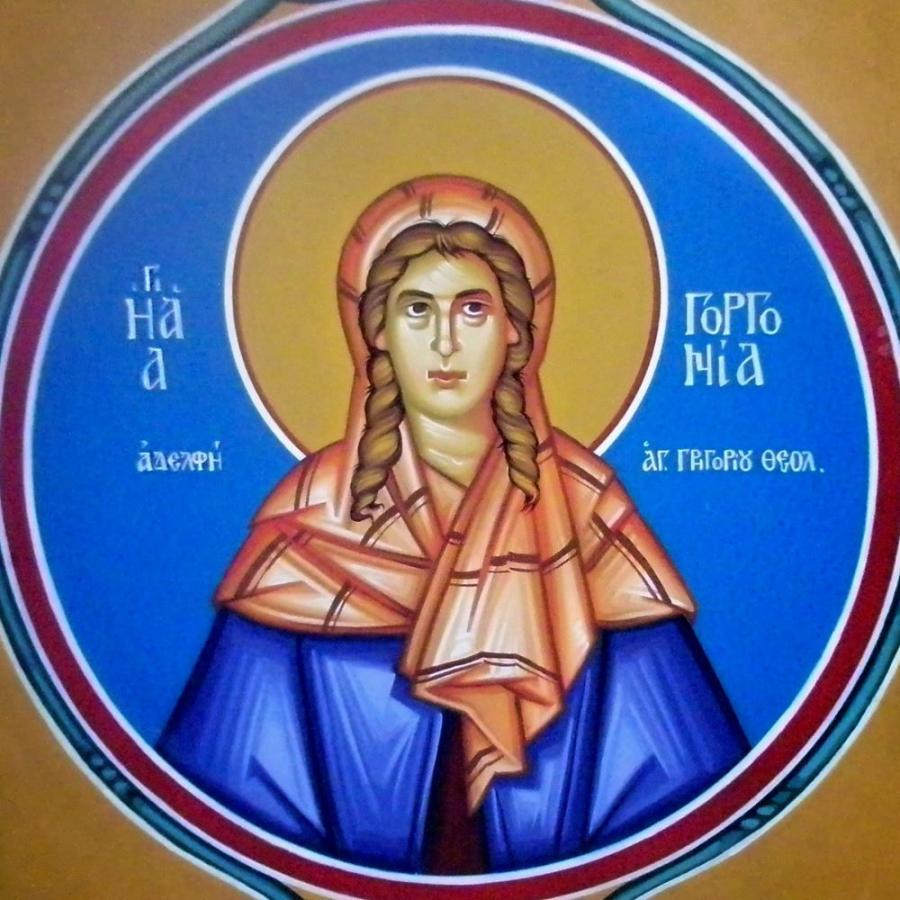
St. Gorgonia was the daughter of Saint Gregory Nazianzus and Saint Nonna, and the sister of Saint Gregory the Theologian. Although being raised in such a God-fearing household must have had an enormous influence on her, St. Gorgonia is a woman of intelligence, virtue and generosity in her own right. She may have been born surrounded by the raw materials for holiness, but it was still up to her to make something with them.
Much of what we know about St. Gorgonia’s life comes from the recorded words of St. Gregory, His words give us a picture of a woman who lived her life in the full sunlight of Reality - who knew wisely and confidently, as he said, “for what end we came into being.”
“What could be keener than the intellect of her who was recognized as a common adviser not only by those of her family,” asked St. Gregory, “but even by all men round about, who treated her counsels and advice as a law not to be broken?”
As a young woman, St. Gorgonia was married and had five children, two of whom would become bishops. In the midst of this full life of family and responsibilities, she also preserved a gentle and nearly monastic rhythm of scripture reading, fasting, prayer, and hospitality. She was known for opening her house to strangers and those in need, and for “a combination of sympathy and dignity” towards the poor, particularly widows.
In this way, Saint Gregory reflected that she found a way to serve God that combined “the excellence of the married state with that of the unmarried state” - that the essence of St. Gorgonia’s life would not have been different if she had become a nun vs. a mother. He wrote that she lived a life that made wonderful use of the materials it had been given; that she recognized clearly her role and destiny as a human being, and lived in the light of all the riches she discovered there. Thus, he reflected, Saint Gorgonia taught him that "neither [marriage or monasticism] absolutely binds us to, or separates us from, God or the world,” but are simply the raw materials of virtue.
Later in her life, St. Gorgonia suffered from both accident and illness - including a near-death injury when her cart overturned and the horse dragged her under it. Although she received miraculous healing from this event, she suffered from other illnesses and had a vision in which the day of her death was revealed to her so that she might prepare herself. St. Gorgonia died around the year 372 at the age of thirty-eight, while her mother and brother were still living. Her last words were, “In peace I will both lie down and sleep” (Psalm 4:8).
“Her nobility consisted in the preservation of the Image,” St. Gregory said at her funeral, “and the perfect likeness to the Archetype…ever more and more conforming, in things pertaining to God, to those truly initiated into the heavenly mysteries; and in knowing whence, and of what character, and for what end we came into being.” She accompanies us still as a reminder that our lives are presented to us as not “right” or “wrong” ways of being, but as the raw materials full of possibility for holiness, generosity, and love.
We celebrate St. Gorgonia on February 23/March 8th.
Holy Mother Gorgonia, pray to God for us!
Several Axia board members were recently present at the world premiere of a vespers celebrating St. Gorgonia in Yale University’s Marquand Chapel, hosted by Dr. Nadieszda Kizenko and the Institute of Sacred Music. You can find the text of the service here.
This icon is from the website for Orthodox Christianity Now and Then.


